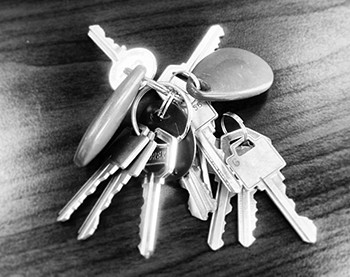Increasingly unequal levels of home ownership between poor and wealthy young households in France
Drawing on INSEE’s Housing surveys, the authors analyze growing disparities in first home purchases among young households (couples aged 25-44) over the long period from 1973 to 2013 in metropolitan France.
The apparent stability of average home ownership rates across the population masks growing inequalities between households by standard of living.
Home ownership among young households of modest means—those in the 1st quartile or the poorest 25% of households—fell from 34% in 1973 to 16% in 2013. Over the same period, home ownership among wealthy young households—those in the 4th quartile or the wealthiest 25% of households—increased from 43% to 66%.
Growing gap in prices of homes purchased
During the 1990s the price gap between homes purchased by poor households and homes purchased by wealthy households widened to the point of doubling, then narrowed to 34% in 2013. In 2013 the average price of homes purchased by poor households was approximately 180,000€ as against approximately 240,000€ for homes purchased by wealthy households.
The volume of real estate value acquired by poorer households is sharply below that of wealthy ones and by 2013 had fallen to five times lower. Two factors operative here were higher real interest rates from the late 1980s and a doubling of real estate prices between 1996 and 2010.
Family financial or material support decisive in home acquisition, and unequal
Financial and material support to young households, either directly for purchase in the form of a gift or loan or indirectly through an earlier gift or making a housing unit available to the household during pre-acquisition years, played a decisive role in first-time home acquisition. Nearly four out of ten first-time homebuyers under 45 received financial assistance from family at the time of purchase. But poor households received family financial aid less often, and that aid was not always enough to compensate for difficulties in home acquisition, especially after the rise in real estate prices.
Whereas the proportion of poor young households receiving family home-buying aid either stagnated or fell during the 2000s, the proportion of wealthy young households receiving aid rose.
Falling rural home acquisition among poor young households
The proportion of poor households owning a home in a rural area fell sharply over the period, from 37% in 1970 to 11% in 2013, while first home purchasing in urban areas remained high among wealthy young households throughout the period.
New family structures
In forty years, the family structures of poor young households also changed. The proportion of single-parent families more than tripled, rising from 9% in 1978 to 29% in 2013. Meanwhile, the proportion of poor young couples with children fell sharply, from 78% in 1978 to 38% 35 years later. Given that couples with children are more likely to buy a home than single-parent families, this development helps explain the falling proportion of poor young homeowners observed over the four decades studied.
Source: Carole Bonnet, Bertrand Garbinti, Sébastien Grobon, 2017, Home ownership and housing wealth inequalities among French young households, 1973-2013, Document de travail.
Carole Bonnet, Bertrand Garbinti, Sébastien Grobon, 2018, Rising inequalities in access to home ownership among young households, in France, 1973-2013. Économie et Statistique / Economics and Statistics, 500-501-502, 117–138.
Contact: Carole Bonnet, Bertrand Garbinti, Sébastien Grobon
Online: October 2018

